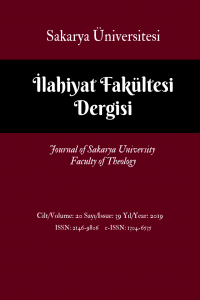Sahâbe Edebiyatı Kaynağı Olarak İbn Ebî Hayseme’nin et-Târîḫ Adlı Eseri
Ibn Abī Khaythama’s al-Tārīkh as a Source of the Major Ṣaḥāba Literature
Author(s): Aziz Gökçe, Hayati YılmazSubject(s): Islam studies
Published by: Sakarya üniversitesi
Keywords: Ḥadīth; Ṣaḥāba; The Ṣaḥāba literature; Ibn Abī Khaythama; al-Tārīkh;
Summary/Abstract: Ibn Abī Khaythama is one of the sources related to ṣaḥāba (companions of the Prophet). He had identified ṣaḥāba through ḥadīth narratives or explanations of scholars in his al-Tārīkh. He areco-unted many information on various issues about their names, families and lifes for introduction of ṣaḥāba. However, al-Tārīkh had reached to present as missing. Some of the information in missing part of this work, can be accessed from the ṣaḥāba literature. When five works in this literature were examined, Ibn Abī Khaythama’s explanations about the change of the people after the arrival of Islam, the life of the Prophet peace be upon him, general information about the period of ṣaḥāba, 10 people had been heralded with Paradise and in total 408 ṣaḥāba were iden-tified. It was included less than one third of these in the present part of the al-Tārīkh. Writers of the companions literature also benefited from Ibn Abī Khaythama about the people controversied to be ṣaḥābī. It was seen that 57 non-ṣaḥāba in these. These were evaluated in three groups as Ibn Ḥajar applied at his work al-Iṣāba and understood that 10 of these are who saw the Prophet before the age of appeal, 28 of these are mukhadramūn (severeds), 19 of these are the followers or thought they were companions because their names were mispelled. Also It was observed that Ibn Abī Khaythama and Ibn Ḥajar mostly reached the same result in detecting the people who are ṣaḥāba and who are not ṣaḥāba.
Journal: Sakarya Üniversitesi İlahiyat Fakültesi Dergisi (SAUIFD)
- Issue Year: 21/2019
- Issue No: 40
- Page Range: 491-516
- Page Count: 26
- Language: Turkish

